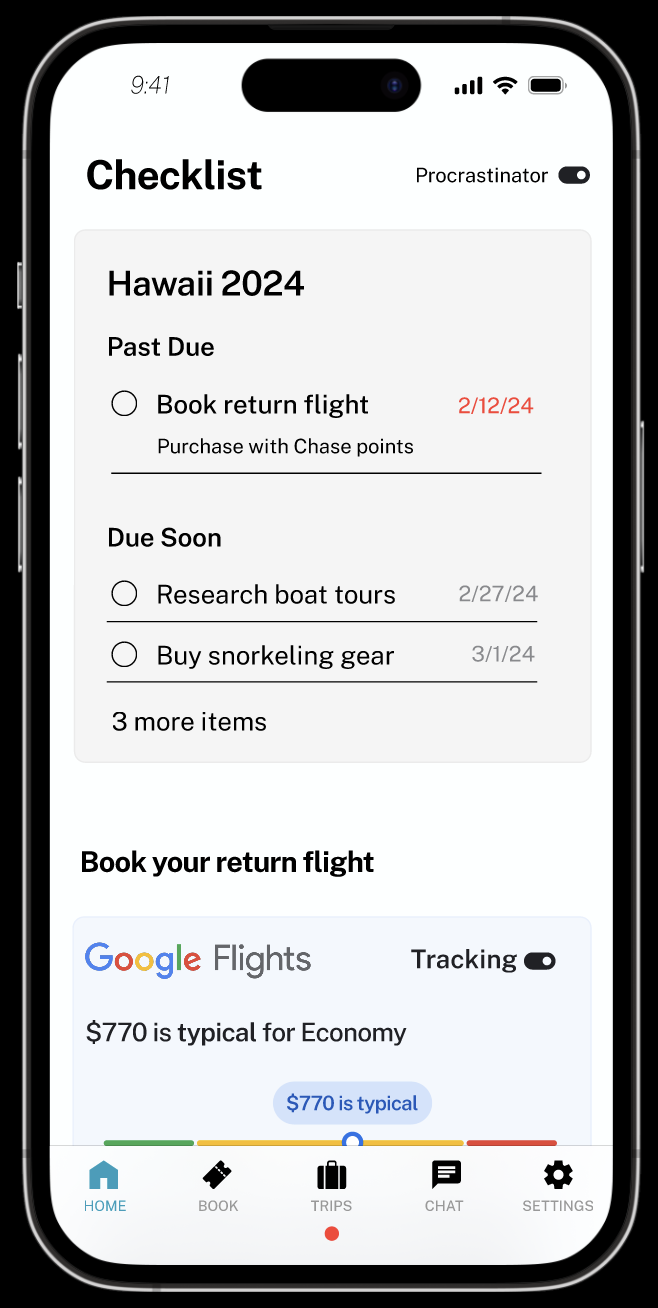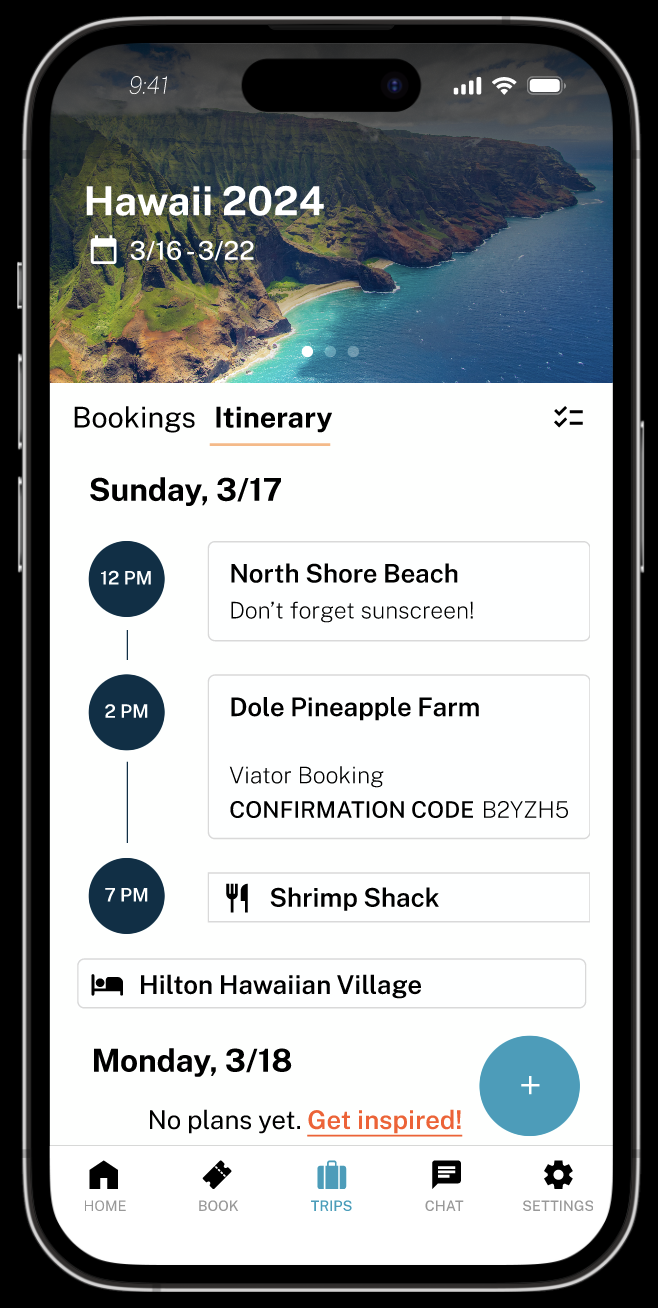Morii
Creating a trip planning mobile app.
Project Overview
-
Role
Product Designer
-
Problem
Imagine you’ve just been hired as a product designer for a new startup. The startup’s goal is to build a modern-day mobile app that helps people plan their next trip.
-
Goal
To design an end-to-end user flow for a specific user segment.
-
Timeline
6-weeks
-
Skills
Designing a new app & brand from scratch, Product Design, Machine learning/AI
-
Team
Individual project
User Research
To gain deep user understanding, I conducted a week-long research sprint. This involved:
1:1 Interviews: I spoke with five potential users who travel at least one week per year.
Affinity Diagramming: I consolidated my interview notes into a visual map to identify key themes and user needs.
User Persona Development: Based on these insights, I created detailed user personas representing my target audience.
User Insight Statements: I drafted clear and concise statements summarizing the key user needs and behaviors.
Competitive Analysis: I researched and analyzed similar products to understand the competitive landscape.
Goal: To understand how people experience trip planning, how they go about trip planning (the process), what their needs are & common challenges they face when trip planning.
Objectives:
1. Understand the end-to-end process of how people currently trip plan
2. Learn what the ideal trip planning process could look like
1:1 Interviews
From my 1:1 research interviews, I found that users felt overwhelmed when planning trips. Whether they were a meticulous planner who invested 30+ hours months in advance, or a last-minute traveler who wings it, both groups of users could benefit from trip planning tools to improve the experience.
Research Findings
After consolidating my research I summarized my findings. Two findings stood out in particular: 1.) Users either take one of two approaches to trip planning a.) they plan far in advance or b.) they wait until the last minute to plan. 2.) Users benefit most from borrowing ideas from their friends' past itineraries. These itineraries spark activity ideas and guide prioritization by revealing which activities were truly worthwhile.
Competitive Analysis
My competitive analysis revealed a gap in trip planning apps - a lack of personalization for different user approaches.
To address this, I wanted my app to tailor the user experience based on individual planning styles. As users interact with the app, it would then learn their behavior and deliver increasingly relevant recommendations and experiences.
Personas
After conducting my research, I defined three distinct personas based on traveler habits, beliefs and expectations.
The Travel Enthusiast
The travel enthusiast needs help prioritizing travel content to view because they can spend hours trip planning.
The Procrastinator
The procrastinator needs to be able to quickly plan trips because they often wait until the last minute which causes them to sometimes miss out on experiences.
The risk averse couple needs reassurances when booking travel because they are often anxious about their trips.
The Risk Averse-Couple
Problem Statement
How might we create a product that adapts to different trip planning behaviors?
Strategy
Since I found significant variation in how people approached traveling, I recognized how important tailoring the user experience to individual planning styles would be. My hope was that as users interact with the app, it would then learn their behavior and deliver increasingly relevant recommendations and experiences. To manage the project scope I decided to first build out a tailored experience for the procrastinator user segment to enable them get tasks done & build a trip itinerary quickly.
Sketches
With Angi's user journey in mind, I began sketching. I initially focused on optimizing the app's search function but realized offering distinct browsing modes could be advantageous. To explore this, I began sketching a standard browsing mode and a specialized Procrastinator mode.
Wireframes
Then, I created some low-fidelity wireframes to flesh out the designs and begin developing the interaction design.
User Scenario
Angi, based on our procrastinator persona, has a trip to Hawaii in less than two weeks so turns to Morii to finalize her travel itinerary.
Morii first notices that Angi’s trip is rapidly approaching and she still has an incomplete to do list so it suggests she switch to procrastinator mode.
From procrastinator mode, she is guided to first update her to do list, then begin working on completing items from her checklist by finding activity ideas from shared itineraries. Angi then is able to add recommended activities to her own itinerary, saving her time.
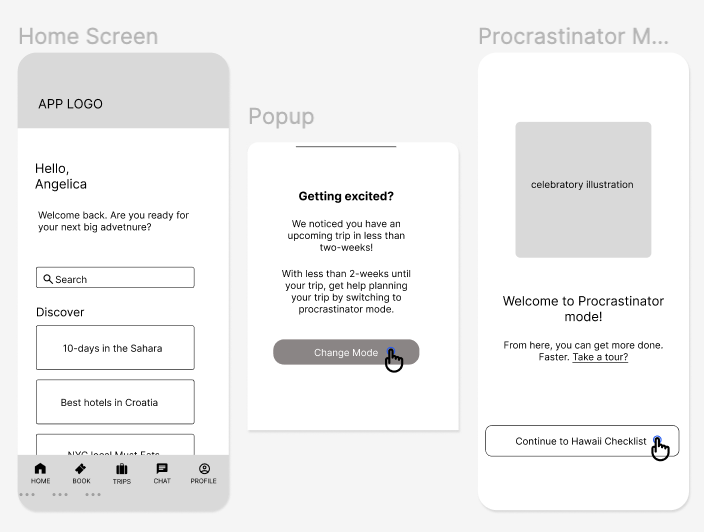

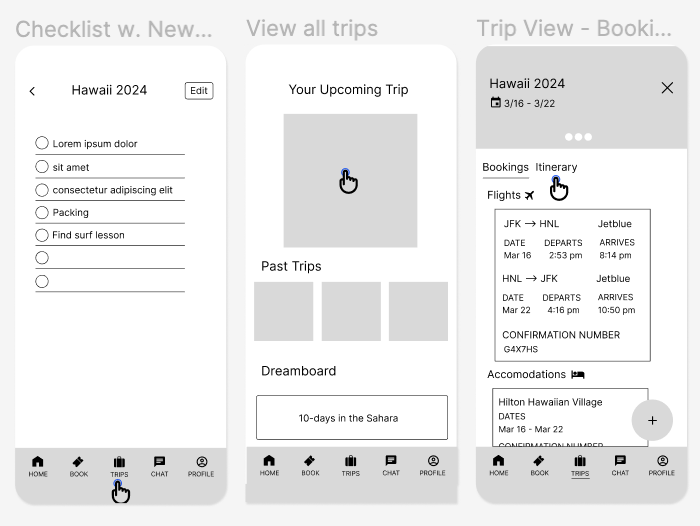
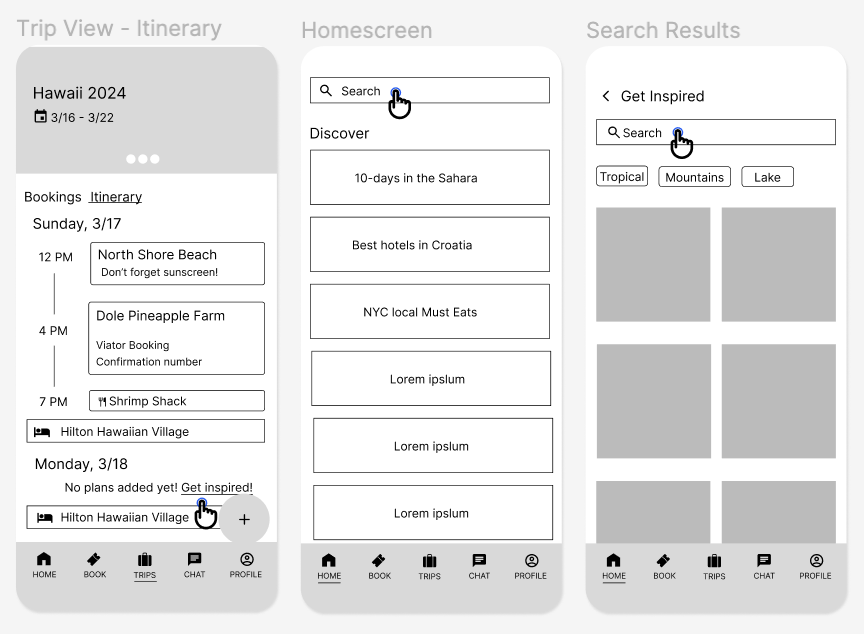
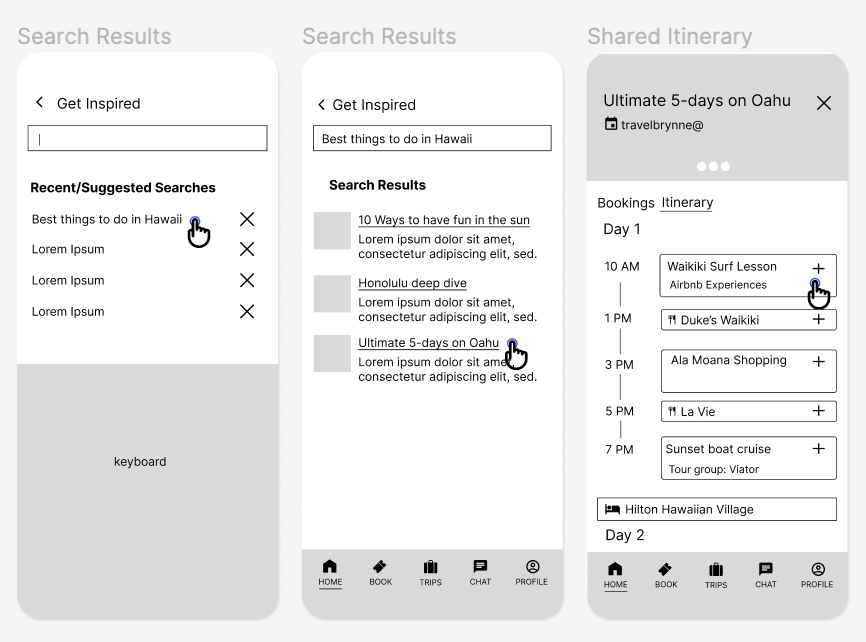
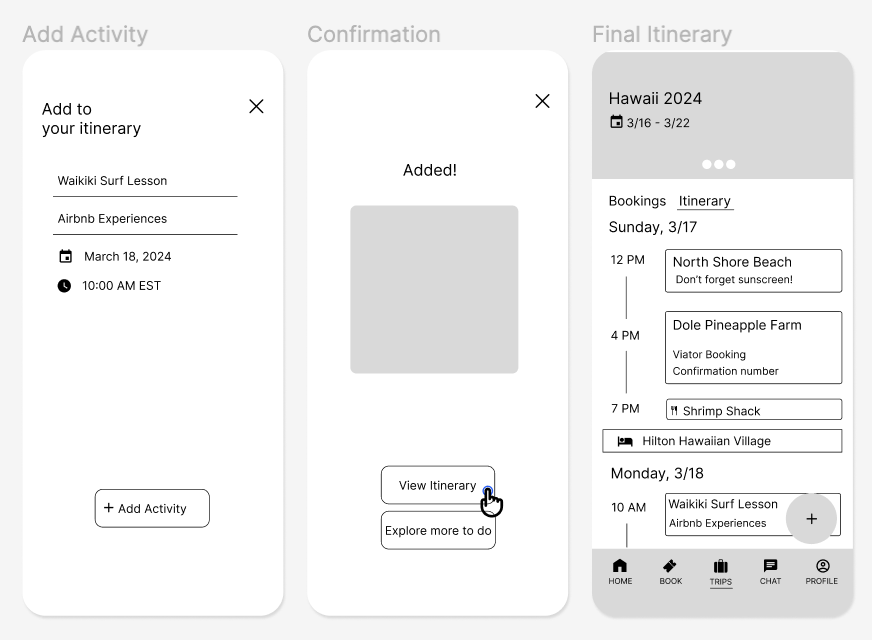
Prototype & Test
Usability Test Results
I conducted four usability tests with my low-fidelity prototype with a goal of assessing if users can successfully plan their trip in procrastinator mode. Systems Usability Scale Score Average: 84
Final Design
Retrospect
Impact
“Your commitment to interview a variety of user types really shows in the personas. These feel authentic, you went beyond the superficial to learn more. It is such a thoughtful, empathetic way to present your research, and it is a way that aligns user experience and business value.” - Michael Cabus
Lessons Learned
User research in key in creating something meaningful. Continuous iteration really improves the user experience. Prototyping can be challenging but fun.
Next Steps
Building out tailored experiences for the travel enthusiast and risk-averse user segments. Additional, more research would be helpful to better understand the procrastinator user flow. For example, I assumed that user’s first instinct would be to make a checklist when overwhelmed and behind. However, I’d like to test that.


